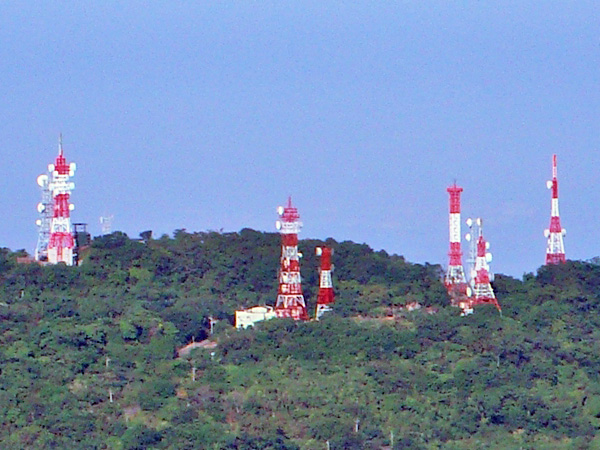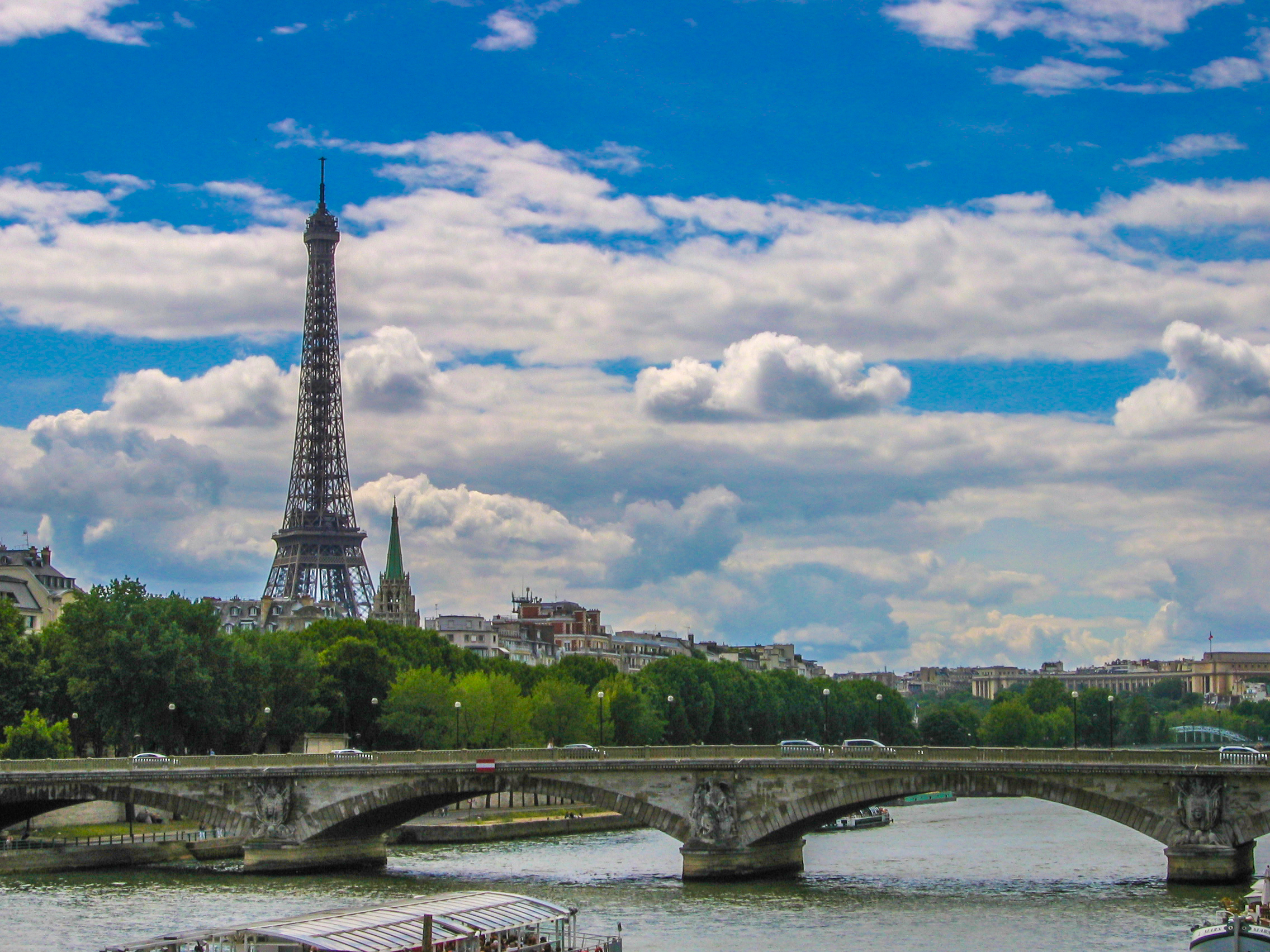|
France 2
France 2 () is a French free-to-air public television channel. The flagship channel of France Télévisions, it broadcasts generalist programming including news, entertainment (such as dramas, films, and game shows), factual programmes, and sports. It is headquartered alongside its sister networks at France Télévisions' headquarters in the 15th arrondissement of Paris, along the Seine. The channel began test broadcasts on 10 September 1959 and officially launched on 18 April 1964 as RTF Télévision 2, under the control of Radiodiffusion-Télévision Française (RTF). RTF was succeeded by the Office de Radiodiffusion Télévision Française (ORTF) in 1964. On 6 January 1975, ORTF was dissolved and split into multiple independent organisations under government control, with the channel operating as Antenne 2. In 1992, the channel merged with FR3 under the new organisation France Télévision, and was renamed France 2. In 2000, France 2 and France 3 were merged with the remain ... [...More Info...] [...Related Items...] OR: [Wikipedia] [Google] [Baidu] |
2160p
4K resolution refers to a horizontal display resolution of approximately 4,000 pixels. Digital television and digital cinematography commonly use several different 4K resolutions. In television and consumer media, 38402160 (4K UHD) with a 16:9 aspect ratio is the dominant standard, whereas the digital cinema, movie projection industry uses 40962160 (Digital Cinema Initiatives, DCI 4K). The 4K television market share increased as prices fell dramatically throughout 2013 and 2014. 4K standards and terminology The term "4K" is generic and refers to any resolution with a horizontal pixel count of approximately 4,000. Several different 4K resolutions have been standardized by various organizations. The terms "4K" and "Ultra HD" are used more widely in marketing than "2160p" (''cf.'' "1080p"). While typically referring to motion pictures, some digital camera vendors have used the term "4K photo" for still photographs, making it appear like an especially high resolution even though 3 ... [...More Info...] [...Related Items...] OR: [Wikipedia] [Google] [Baidu] |
TV5Monde
TV5Monde (), formerly known as TV5, is a French public television network, broadcasting several channels of French-language programming. It is an approved participant member of the European Broadcasting Union. The network is available across Europe on satellite via Astra 19.2°E and Eutelsat Hot Bird (13°E) (both free-to-air), online and via TVPlayer. Summary TV5 started on 2 January 1984 and was under the management of Serge Adda until his death in November 2004. The next director from 6 April 2005 was Jean-Jacques Aillagon, a former French Minister for Culture and Communication. The director-general is now Marie-Christine Saragosse. In January 2006, TV5 underwent a major overhaul, including rebranding as "TV5Monde" to stress its focus as a global network ("Monde" is French for "World"). Also, the changes included a new schedule and a new program line-up. Since 1993, "TV5 Monde" is part of the channel's corporate name. Its Canadian operations are branded "TV5 Québec ... [...More Info...] [...Related Items...] OR: [Wikipedia] [Google] [Baidu] |
Streaming Television
Streaming television is the digital distribution of television content, such as films and television series, streamed over the Internet. Standing in contrast to dedicated terrestrial television delivered by over-the-air aerial systems, cable television, and/or satellite television systems, streaming television is provided as over-the-top media (OTT), or as Internet Protocol television (IPTV). In the United States, streaming television has become "the dominant form of TV viewing." History Up until the 1990s, it was not thought possible that a television show could be squeezed into the limited telecommunication bandwidth of a copper telephone cable to provide a streaming service of acceptable quality, as the required bandwidth of a digital television signal was (in the mid-1990s perceived to be) around 200 Mbit/s, which was 2,000 times greater than the bandwidth of a speech signal over a copper telephone wire. By the year 2000, a television broadcast could be compressed t ... [...More Info...] [...Related Items...] OR: [Wikipedia] [Google] [Baidu] |
Ultra-high-definition Television
Ultra-high-definition television (also known as Ultra HD television, Ultra HD, UHDTV, UHD and Super Hi-Vision) today includes 4K resolution#Resolutions, 4K UHD and 8K resolution#Resolutions, 8K UHD, which are two digital video formats with an Aspect ratio (image), aspect ratio of 16:9. These were first proposed by NHK Science & Technology Research Laboratories and later defined and approved by the International Telecommunication Union (ITU). The Consumer Electronics Association announced on October 17, 2012, that "Ultra High Definition", or "Ultra HD", would be used for displays that have an display aspect ratio, aspect ratio of 16:9 or wider and at least one digital input capable of carrying and presenting native video at a minimum resolution of . In 2015, the Ultra HD Forum was created to bring together the end-to-end video production ecosystem to ensure interoperability and produce industry guidelines so that adoption of ultra-high-definition television could accelerate. Fr ... [...More Info...] [...Related Items...] OR: [Wikipedia] [Google] [Baidu] |
High-definition Television
High-definition television (HDTV) describes a television or video system which provides a substantially higher image resolution than the previous generation of technologies. The term has been used since at least 1933; in more recent times, it refers to the generation following standard-definition television (SDTV). It is the standard video format used in most broadcasts: Terrestrial television, terrestrial broadcast television, cable television, satellite television. Formats HDTV may be transmitted in various formats: * 720p (): 921,600 pixels * 1080i () interlaced scan: 1,036,800 pixels (≈1.04Mpx). * 1080p () progressive scan: 2,073,600 pixels (≈2.07Mpx). ** Some countries also use a non-standard CTA resolution, such as : 777,600 pixels (≈0.78Mpx) per field or 1,555,200 pixels (≈1.56Mpx) per frame When transmitted at two megapixels per frame, HDTV provides about five times as many pixels as SD (standard-definition television). The increased resolution provides for a cl ... [...More Info...] [...Related Items...] OR: [Wikipedia] [Google] [Baidu] |
Digital Terrestrial Television
Digital terrestrial television (DTTV, DTT, or DTTB) is a technology for terrestrial television, in which television stations broadcast television content in a digital signal, digital format. Digital terrestrial television is a major technological advancement over analog television, and has largely replaced analog television broadcasting, which was previously in common use since the middle of the 20th century. Test broadcasts began in 1998, and the Digital television transition, changeover to digital television began in 2006 and is now complete in many countries. The advantages of digital terrestrial television are similar to those obtained by digitizing platforms such as cable TV, satellite, and telecommunications: more efficient use of radio spectrum bandwidth, the ability to broadcast more channels than analog, better quality images, and potentially lower operating costs for broadcasters. Different Country, countries have adopted different digital broadcasting standards. Some ... [...More Info...] [...Related Items...] OR: [Wikipedia] [Google] [Baidu] |
Television Numerique Terrestre
Television in France was introduced in 1931, Timeline of the introduction of television in countries, when the first experimental broadcasts began. Colour television was introduced in October 1967 on France 2, La Deuxième Chaîne. Digital terrestrial television The digital terrestrial television platform, known locally as TNT (from the literal translation in French, ''télévision numérique terrestre''), was launched on 31 March 2005 after a short testing period. Like Freeview (UK), Freeview in the UK, it provides many new channels, as well as the current terrestrial television stations. Like the rest of Europe, France uses the DVB-T transmission technology. The 13 first digital free channels were launched on 31 March 2005. In October, 4 additional free channels were added: the 24h news channels BFM TV and I-Télé, the music and entertainment youth channel Europe 2 TV, and the free children channel Gulli, joint-venture between Lagardère Active and France Télévisions. Pay ... [...More Info...] [...Related Items...] OR: [Wikipedia] [Google] [Baidu] |
Office De Radiodiffusion Télévision Française
The (; ORTF; , or French Radio and Television Broadcasting Office) was the national agency charged, between 1964 and 1975, with providing public radio and television in France. All programming, especially news broadcasts, were under strict control of the national government. History Background In 1945, the provisional French government established a public monopoly on broadcasting with the formation of Radiodiffusion Française (RDF). This nationalisation of all private radio stations marked the beginning of a new era of state-controlled broadcasting in France. As part of its mandate, the RDF also established a 441-line television station known as ''Télévision française''. This station made use of the frequencies previously utilized by the Nazi-operated ''Fernsehsender Paris''. In 1949, the RDF underwent a name change to Radiodiffusion-Télévision Française (RTF) in order to reflect the organisation's growing focus on television broadcasting. By the end of the ye ... [...More Info...] [...Related Items...] OR: [Wikipedia] [Google] [Baidu] |
Seine
The Seine ( , ) is a river in northern France. Its drainage basin is in the Paris Basin (a geological relative lowland) covering most of northern France. It rises at Source-Seine, northwest of Dijon in northeastern France in the Langres plateau, flowing through Paris and into the English Channel at Le Havre (and Honfleur on the left bank). It is navigable by ocean-going vessels as far as Rouen, from the sea. Over 60 percent of its length, as far as Burgundy (region), Burgundy, is negotiable by large barges and most tour boats, and nearly its whole length is available for recreational boating; Bateaux Mouches, excursion boats offer sightseeing tours of the river banks in the capital city, Paris. There are 37 List of bridges in Paris#Seine, bridges in Paris across the Seine (the most famous of which are the Pont Alexandre III and the Pont Neuf) and dozens List of crossings of the River Seine, more outside the city. A notable bridge, which is also the last along the course of ... [...More Info...] [...Related Items...] OR: [Wikipedia] [Google] [Baidu] |
15th Arrondissement Of Paris
The 15th arrondissement of Paris () is one of the 20 arrondissements of Paris, arrondissements of the capital city of France. In spoken French, it is referred to as ('the fifteenth'). The 15th arrondissement, called , is situated on the Rive Gauche, left bank of the Seine, River Seine. Sharing the Montparnasse district with the 6th arrondissement of Paris, 6th and 14th arrondissement of Paris, 14th arrondissements, it is the city's most populous arrondissement, with a population of 229,472 as of 2020. – the list of tallest buildings and structures in the Paris region, tallest skyscraper in Paris – and the neighbouring are both located in the 15th arrondissement, at its border with the 14th. It is also home to the tower block, high-rise Beaugrenelle district and the riverside development, as well as the convention centre, where the 180-metre Tour Triangle is set to house a 120-room hotel and of office space in 2026. Close is the , the city heliport, just nearby the bor ... [...More Info...] [...Related Items...] OR: [Wikipedia] [Google] [Baidu] |
Generalist Channel
A generalist channel is a television or radio channel whose target audience is not confined to a particular set of people, but instead aims to offer a wide range of programs and program genres to a diverse general public. The term is mainly used in European countries; in other countries, similar terms such as "general entertainment" is used instead. In radio, this is sometimes referred to as "full-format programming" or full-service radio. Program content Generalist TV channels focus on general entertainment. They also tend to put an extra emphasis on news programming, regarding the provision of news and information as part of their duty. Popularity Generalist channels as a whole are the most watched of all television channels. As of 2008, generalist channels were the most numerous among channel genres in Europe. There were 376 of them, followed by 324 sports channels, 269 entertainment channels and 238 music channels. Among HD television channels in Europe, as of 2011 and 20 ... [...More Info...] [...Related Items...] OR: [Wikipedia] [Google] [Baidu] |


